View of a Venetian carousel of the 17th century located on the Place d’Erlon in Reims.
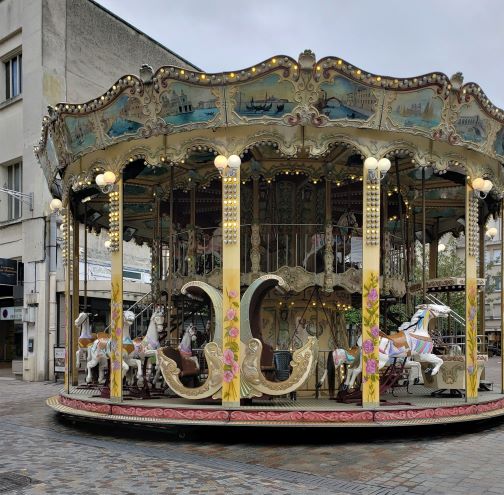
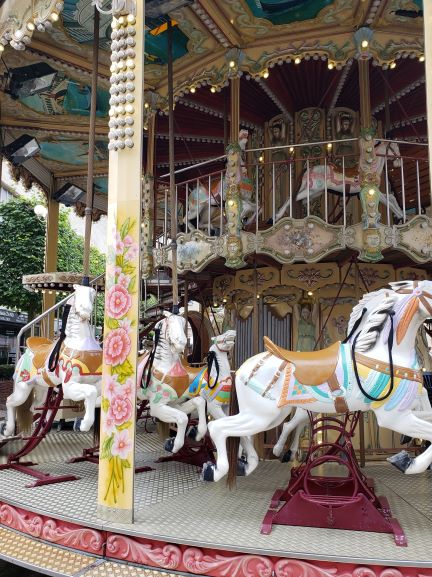
View of a Venetian carousel of the 17th century located on the Place d’Erlon in Reims.


Minerve sits on a rocky outcrop, perched over a couple of rivers in the Hérault department in the Occitanie region in southern France. It is the namesake of the Minervois wine region. It is bordered to the south by the Canal du Midi and to the north by the Montagne Noire mountain range.
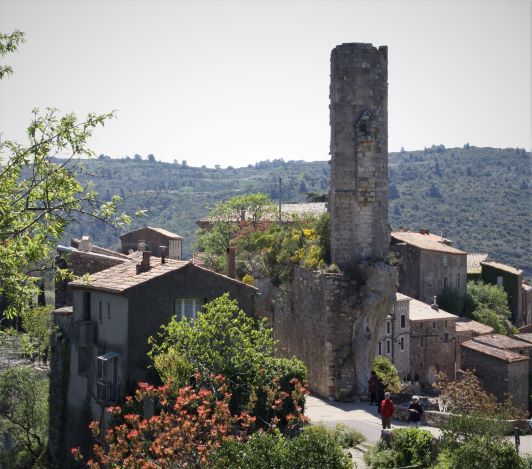
The scenery is breathtaking with gorges and canyons carved in the limestone walls over eons, bridges built where they appear out of those walls, tunnels carved into rock, and houses perched in and atop the limestone. Some look suspended, as if a mild breeze would topple them into the caverns below.
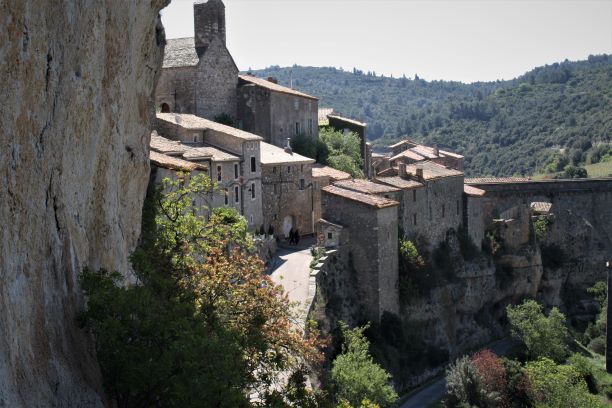
We wandered the streets and alleys, climbing up and over walkways and gardens, taking in the views, and thinking of the history here. This was a medieval village and all that went with it.
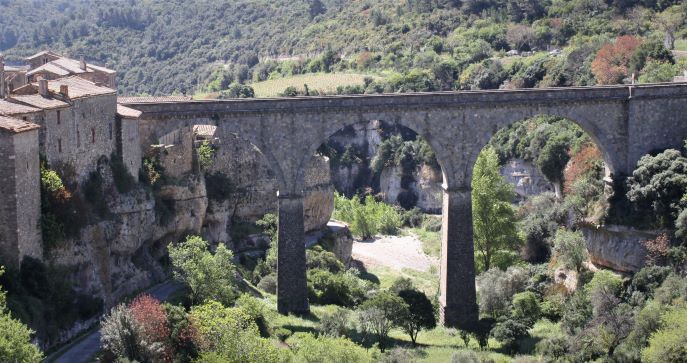
Some history…
With the backing of God and the Pope, with men hungry for loot and blood, Simon de Montfort laid seige, to the impregnable fortress village. And to speed things along he attacked St Rustique’s well, the principal waters source for the village, found at the base of the village. Four catapults were set up around the village, -three towards the city gates and the fourth – the largest named “Malevoisine” to destroy the well.
The village was well protected with double surrounding walls, and overhanging ledges. But, they could not withstand the attacks and eventually several villagers were burned at the stake.
Now, little is left of the fortress. The village is a hodge-podge of narrow alleys, topped by a simple 12th century church.
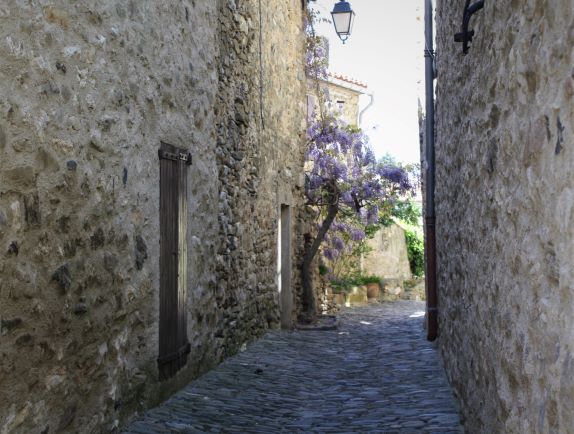
Definitely worth a side trip if you are staying in the area.
If You Go: Minerve is 25 kilometers north-west of Narbonne in Languedoc-Roussillon. It is classified as one of the most beautiful villages of France.
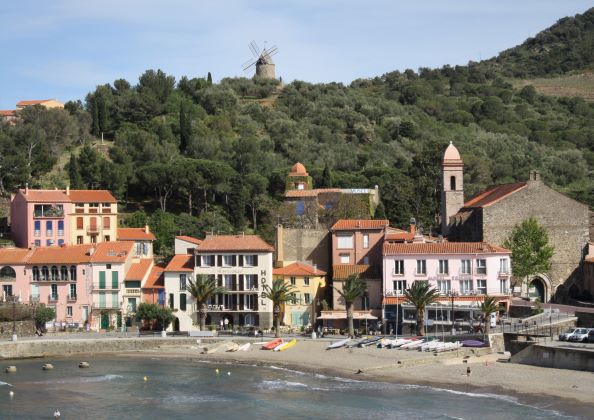
Only 15 miles from Spain, Collioure is a mix of French, Spanish, and Catalan. We saw French street signs, yellow and red Catalan flags, with a mix of Spanish thrown in.
On the Mediterranean coast of southern France, called the Vermillion Coast, Collioure’s views are just what we had hoped for. Dramatic… picturesque…postcard perfect. All overused words and yet they all fit.
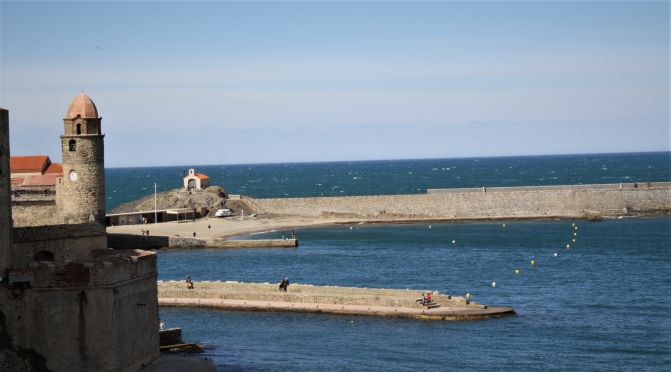
Beaches ranged from pebbly to sandy. All tumbled from the wall-like Pyrenees into the clear blue Med. We could see why painters have flocked here for centuries, trying to capture some of the essence of this piece of paradise.
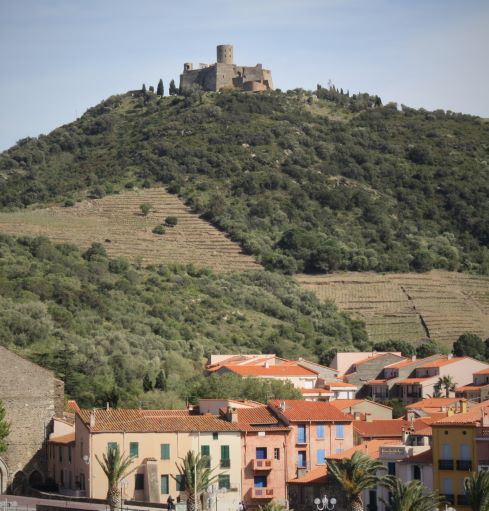
Taking time to wander, then sit at one of the many outdoor terraced cafes, we wondered why we hadn’t come here earlier. And…stayed longer.
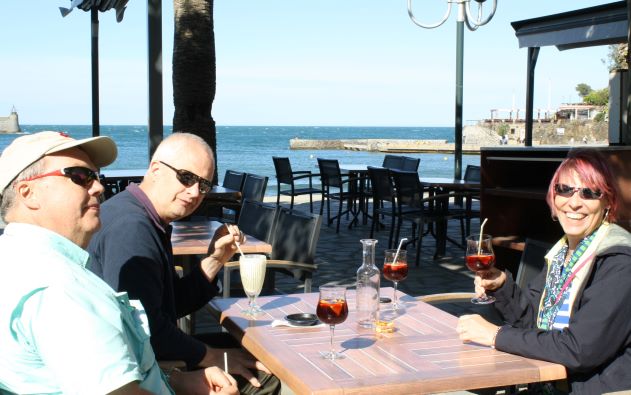
Our day-long visit was too short.

But there is next time…as soon as we can travel again.
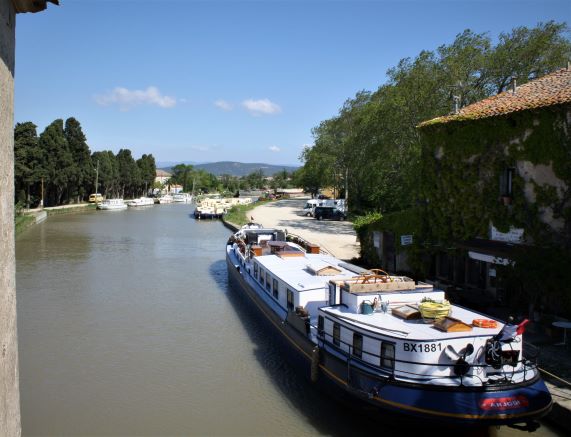
Built between 1667 and 1694 in the province of Languedoc, this canal was the result of the vision of Pierre-Paul Riquet to connect the Atlantic Ocean and the Mediterranean Sea.
The idea was to provide safe transport, avoid pirates of the Gibraltar straits, and shorten the distance to deliver goods throughout the region. The 328 structures of this engineering feat include locks, aqueducts, bridges, and tunnels.
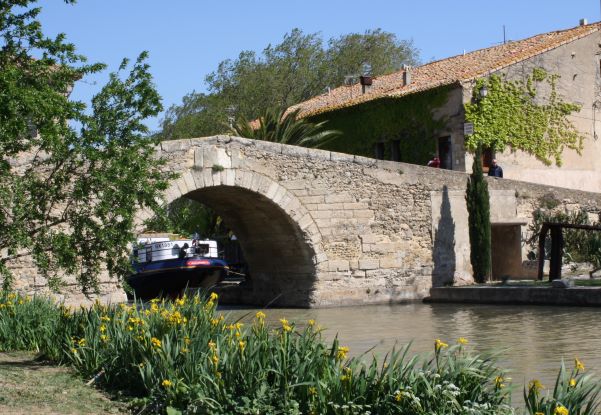
In 1997 this site became a UNESCO protected site.
The Canal du Midi is 240 km long, about 150 miles. It rises 620 feet above sea level at its highest point and zero feet at its lowest. The maximum boat length is 98 feet.
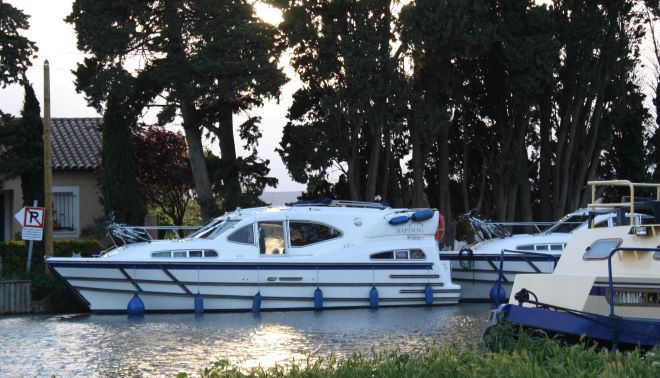
Exploring France in the Languedoc region, we drove over, beside, and around countless parts of the Canal du Midi.
Vacationers in luxury hotel boats cruised peacefully, barges delivered groceries and necessities, and self-guided boats docked along the many bike paths. Restaurants and bars were plenty along the tree-lined canal.
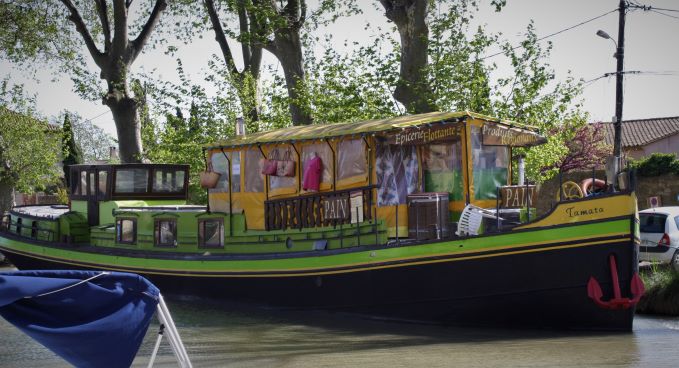
We stopped on bridges to wave to those aboard a boat and toasted those passing by with a glass of wine. All of us were having a good day.
Definitely a place worth exploring…both on and off the canal.
Braseria La Llar
Traveling from Barcelona, Spain to Narbonne, France lunch seemed like a great idea. Our early morning coffee and pastries were just a memory. Not even a crumb remained.
Problem was…where to stop? Restaurants were not evident along the highway, so we pulled into a small town where we noticed a sign for a restaurant atop a building.
Weaving through the many side streets of the village, we finally came upon the restaurant with the sign. This side trip turned out to be one of the best lunch adventures we have had.
Scents of smoking meats permeated the air, getting more fragrant the closer we came to the restaurant’s courtyard. If we weren’t already hungry, these smells would certainly have jump started our stomachs. Inside, we were greeted by a woman speaking a variation of Spanish. I can understand and speak some Spanish. So, some of her words made sense and others not so much.
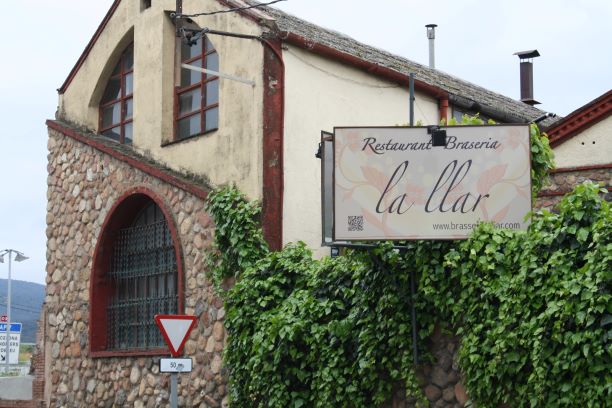
Then it dawned on all of us, we were in the Catalonia part of Spain. The language was similar but different.
Telling us we were a little early for Sunday dinner, she seated us close to the kitchen. At least that’s what I think she said.
The smells became more demanding. In a good way.
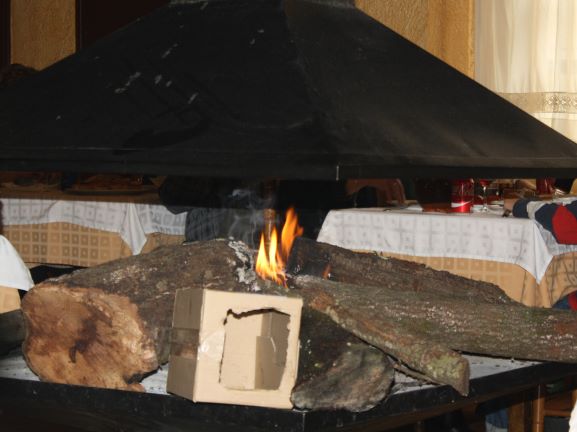
When she handed us menus, I could only make out a few words. This was definitely a type of Spanish I did not know. Trying to tell her we did not speak the language only got us a smile from her before she disappeared. Wondering if I said something wrong, we looked around the restaurant. There was only one other table with people seated at it, a large one with about 20 people ranging in age from a baby to an elderly lady. That was it. The large group sounded like they were having a great time.
Our waitress stopped at that table and said something to a young girl of about 10 years old.
When she came to our table, she explained that she knew English from school. Her aunt was the waitress, her uncle ran the restaurant, and the party was for her grandmother’s birthday. We told her to wish her grandmother happy birthday.
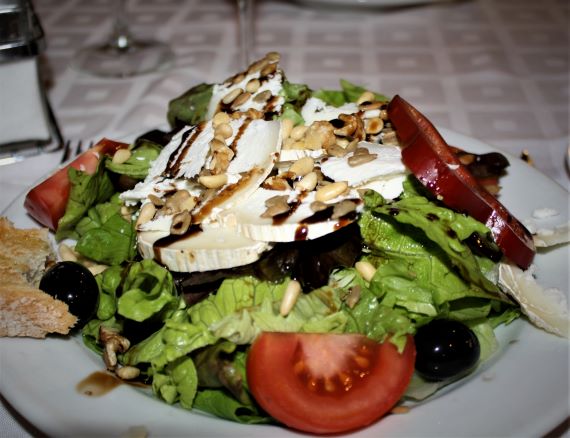
As we enjoyed a lunch worthy of the smells, a second bottle of wine was brought to us compliments of the other table. All was good. They were having a great time and so were we.
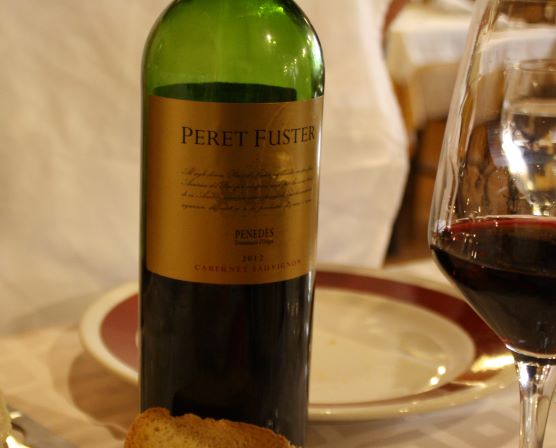
After our plates were cleared, pieces of the most delicious birthday cake I have ever eaten were brought to us…again compliments of the birthday party.
Wishing grandma another happy birthday, we reluctantly made our way out to the car and headed for the highway.
Best impromptu birthday party we have ever been to…
If You Go: The Braseria La Llar Restaurant is located at the entrance of the village of Sant Celoni, at the foot of Montseny, strategic location for nature lovers, Easy access to the street: Mossen Jacint Verdaguer, 5. It is the star place to taste Catalan and mountain cuisine, in a classic style. In the dining room you will find an ideal space to make your meal quiet.
The Cistercian Abbey du Fontfroide is nestled in the foothills of the Corbières, south-west of Narbonne. Founded in 1093, Fontfroide, now classified as a Historic Monument and a Great Site of Occitania, crosses centuries, eras and events, witness to history for present and future generations.
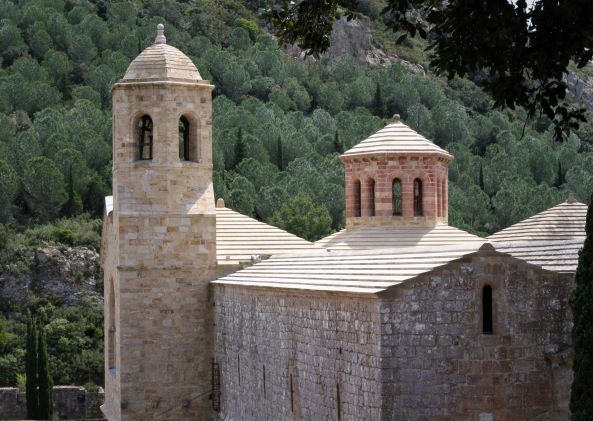
Abbey du Fronfroide was founded in 1093, on land given to a few Benedictine monks by the Viscount of Narbonne. It takes its name from the nearby source, the Fons Frigidus, the Froide Fountain. Besides water, the monks could find wood and stone in the massif for the construction of the monastery.
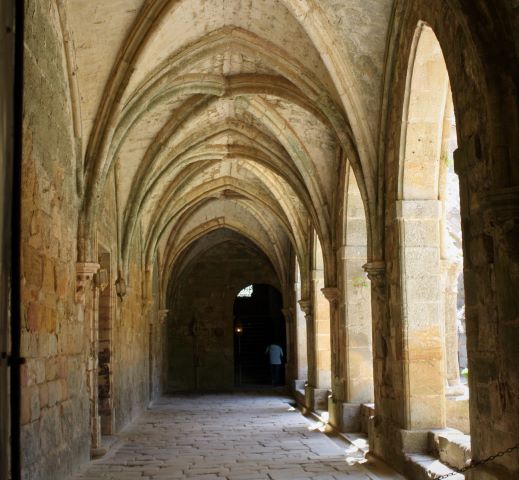
But Fontfroide did not really develop until after 1145 and its attachment to the Order of Cîteaux . The Cistercian monks, under the direction of St Bernard of Clairvaux, wish to return to the purity of the rule of St Benedict, advocating poverty, austerity and architectural sobriety.
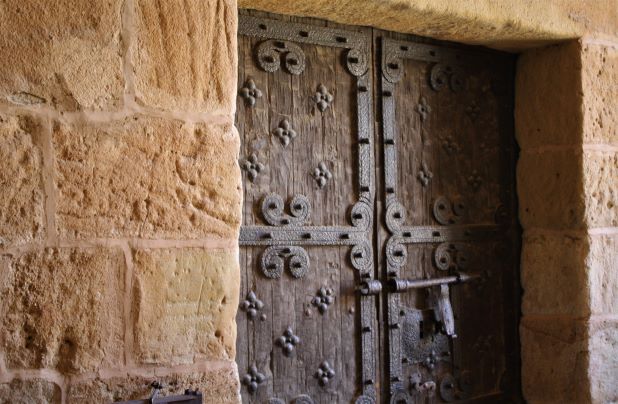
The Abbey du Fontfroide is imprinted within its walls with rich testimonies of these residences, including the monumental triptych by Odilon Redon “Day, Night and Silence” as well as stained glass windows by Richard Burgsthal.
Today, the descendants of Gustave Fayet still maintain the Abbey du Fontfroide with the same passion.
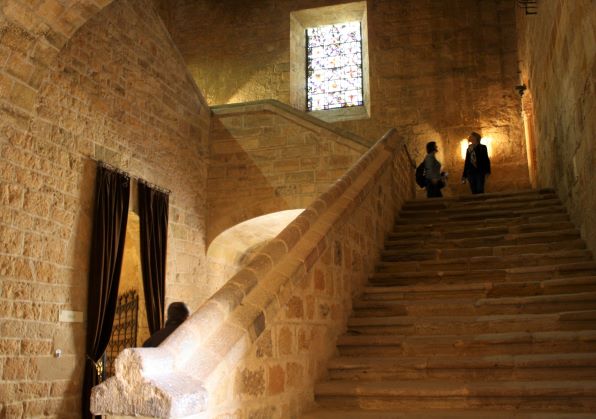
We spent the better part of a day wandering and exploring around and through the Abbey with its thick walls, massive stair cases, impressive gates and doors, and graceful archways. Peaceful courtyards beckoned for us to sit and reflect in the silence. Overhead, fragrant flowers perfumed the air. Statues watched over us. Garden paths wove in and around it all.
The sheer size of the Abbey and the grounds are amazing. Look out over the rooftops to the hills beyond.
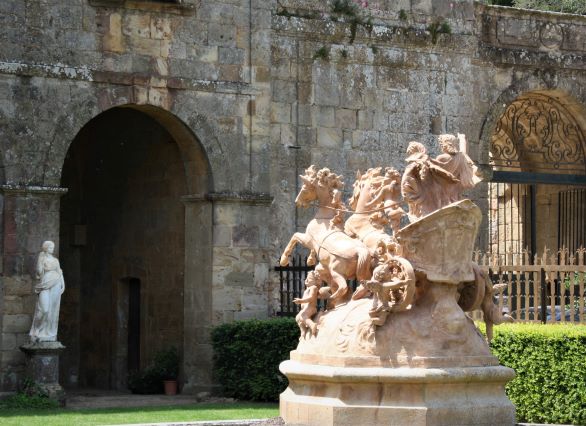
If You Go: Abbey de Frontfroide is located at Route Départementale 613, 11100 Narbonne, France. Their phone number is +33 4 68 45 11 08
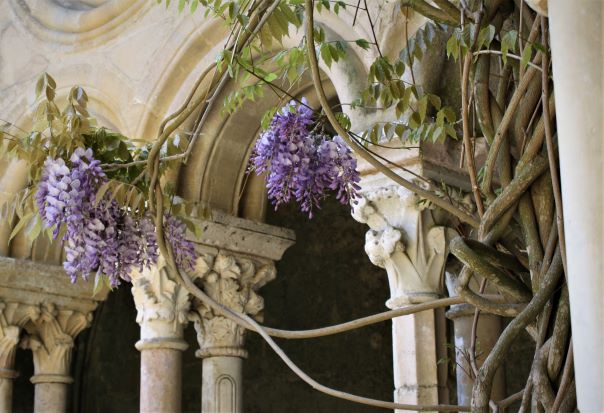
Check more posts for information on France https://travelsandescapes.net
Cossy Champagne
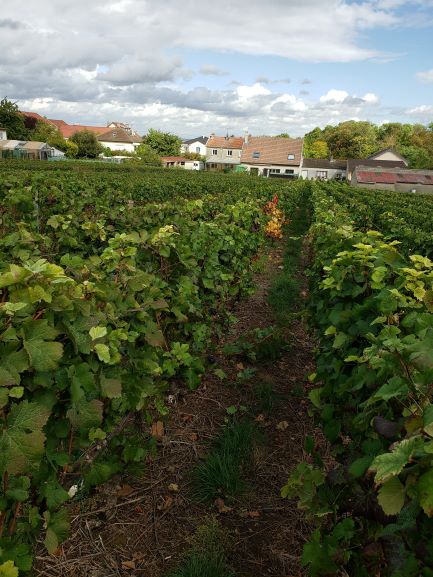
The Cossy estate is based in the 1er Cru village of Jouy-lès-Reims – just a few minutes outside of the center of Reims, and dates to 1764. They started bottling under their own label in the 1950s, in addition to managing the Cooperative winemaking facility for their village and the neighboring hamlet of Pargny-lèsReims.
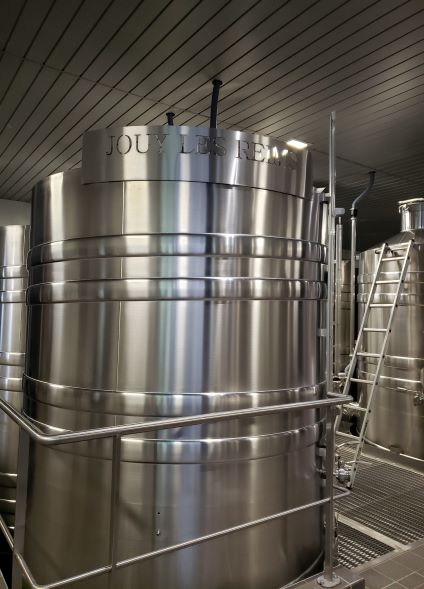
Sophie’s wines all clearly have a graceful, feminine touch. They are all from her estate vineyards within a kilometer or two of the winery, so they’re all from essentially the same terroir.
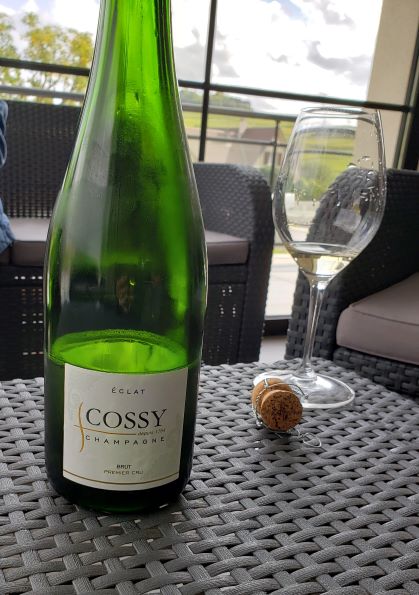
The House of Ruinart is unlike any other. It was the first established House of Champagne in 1729 and inspired by the intuition of a monk well ahead of his time.
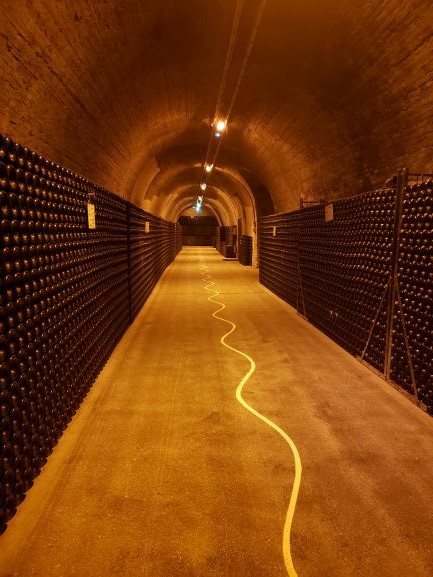
Chardonnay is the very soul of Ruinart. The grape, mainly harvested from the Côte des Blancs and Montagne de Reims terroirs, is at the heart of all our cuvées.
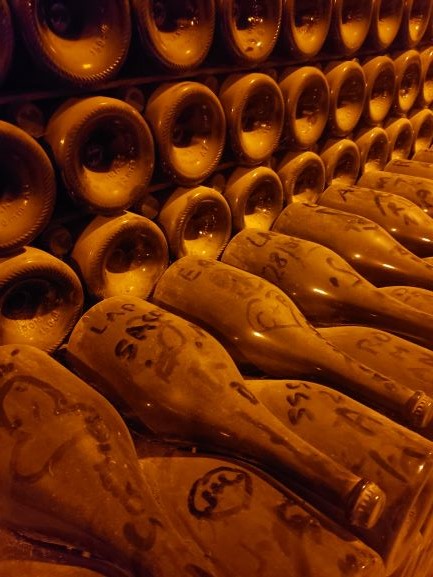
A unique part of our visit included a tour of the crayères, or chalk galleries, classified as a World Heritage site by UNESCO in 2015. It’s hard to describe the feeling when you know you are 125 feet down into the earth with the silent chalk surrounding you.
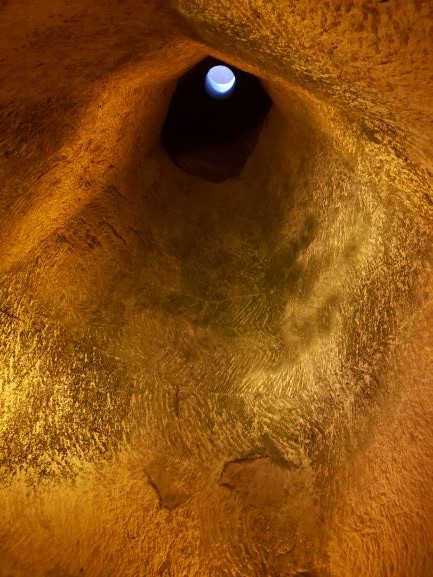
Vaulted ceilings and large galleries, the crayères almost remind you of being in a cathedral where you really should be quiet. The only other souls we saw were rows upon rows of bottles. Probably millions. Not a bad sight.
The cool, dark crayeres are lit by spot lights in a few places. Other times, light comes in from a hole far above you.
Centuries of graffiti are carved into the walls, bearing names, doodles, and even tiny altars with crosses.
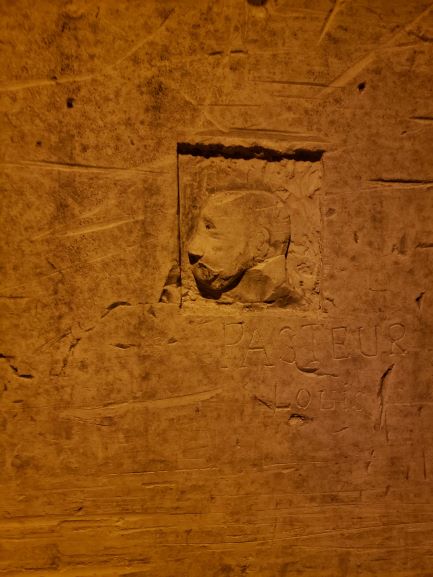
The blend for Blanc de Blancs
The blend is 100% Chardonnay from various years (20 to 25% of which are reserve wines from the 2 previous years).

A large majority of Premiers Crus from the Côte des Blancs and Montagne de Reims vineyards for aromatic refinement, supplemented by Sézannais wines known to provide maturity. Finally, several wines from the north of the Vesle valley give a light, fresh touch.
Home to the great wine production and trading houses, and listed as a Remarkable Site of Taste, the majestic Avenue de Champagne has 110 kilometres of cellars.
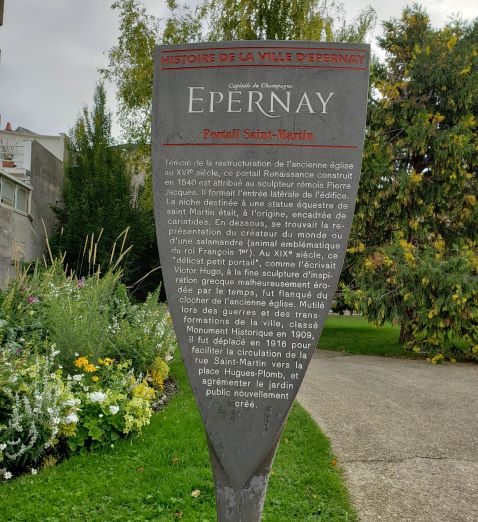
The first Champagne House opened in Epernay in 1729, founded by Nicolas Ruinart, a draper at the time, who wanted to try his hand at producing sparkling wine.
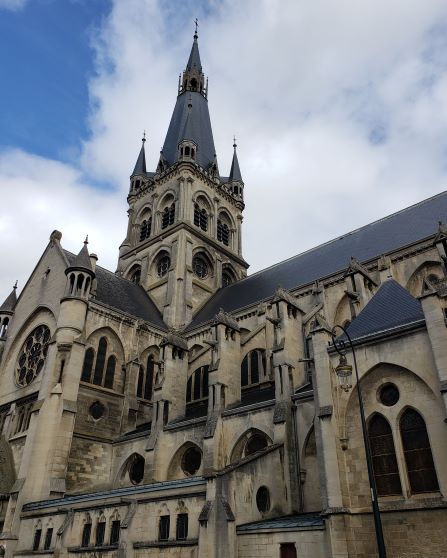
Other establishments would also set up on Avenue de Champagne (in particular Moët & Chandon, in 1743). The Avenue de Champagne, previously known as Rue du Commerce, became an important economic hub in the 19th century and other Champagne Houses followed: Perrier Jouët, de Venoge, Mercier, etc.
In February 1925, the Rue du Commerce became the Avenue de Champagne.
Eguisheim, France
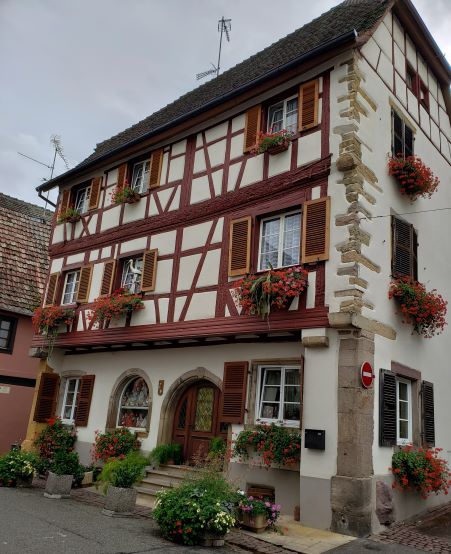
Voted favorite town of the French in 2013, Eguisheim is surrounded by gentle hills covered with vines.
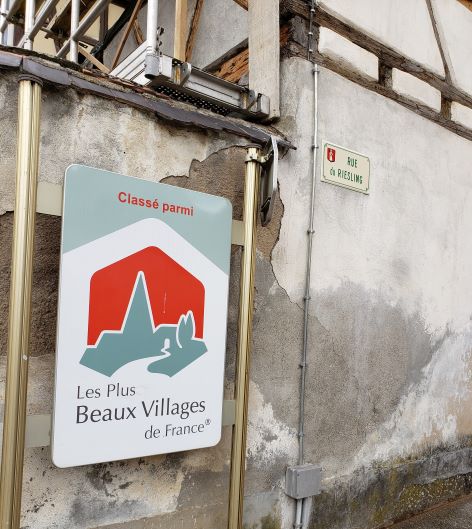
In the heart of the Alsace region, the town flows with its concentric circles, interesting alleys, and multicolored houses.
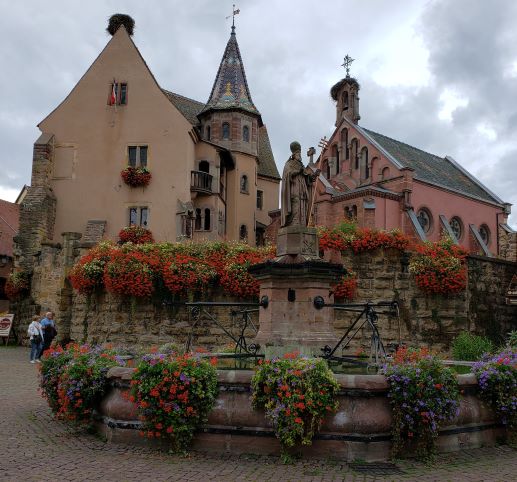
Stork’s nests sit on chimneys. Geraniums flow out of window boxes and pots. Half-timbered houses with their balconies fill the narrow streets.
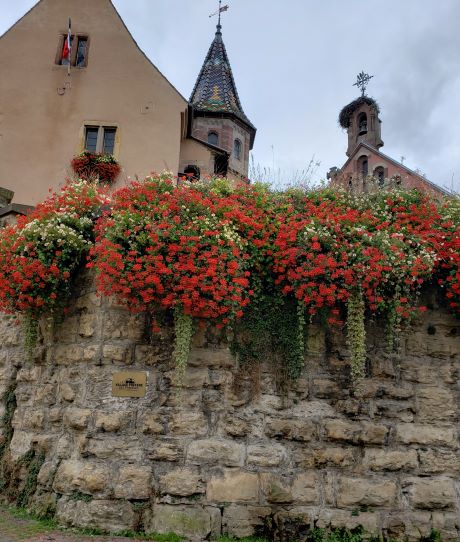
Take some time to explore the town and the wines.
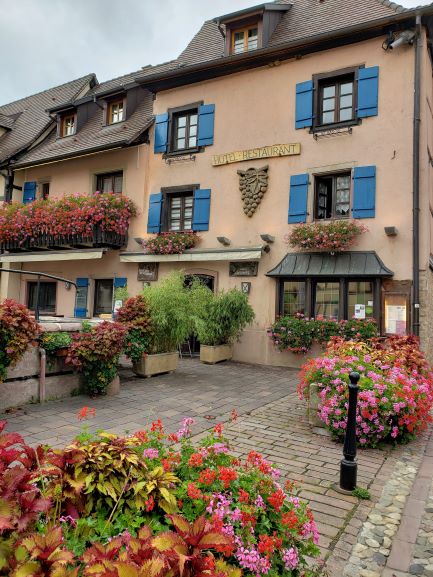
For us, it was a side trip from Colmar, only 5 km away.